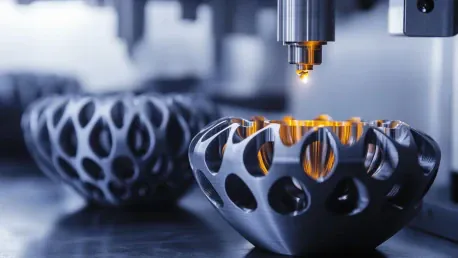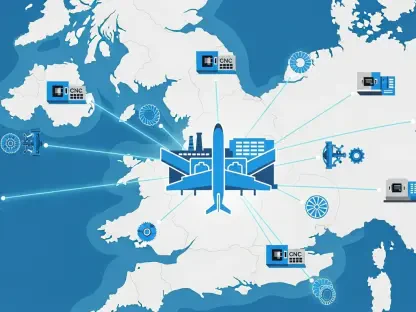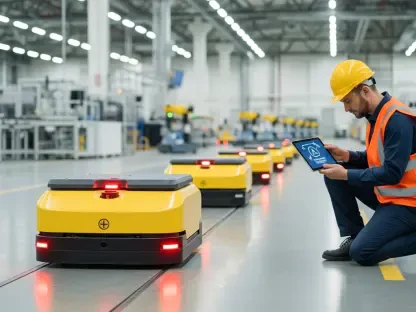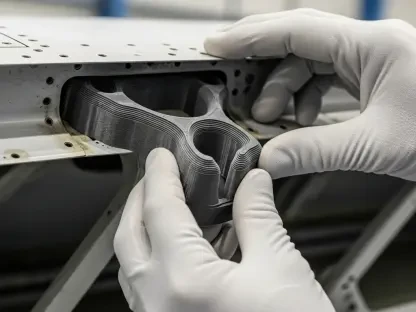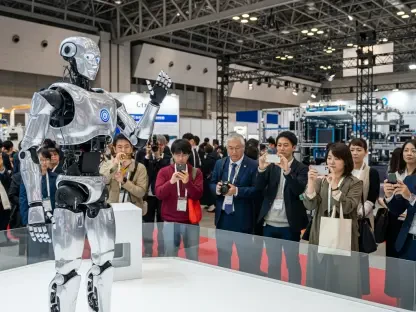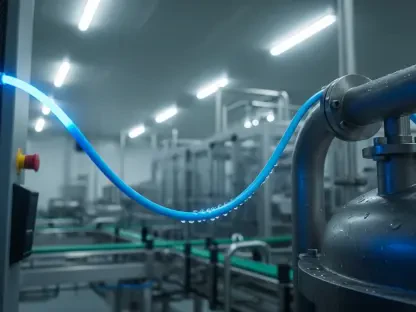Metal 3D printing has emerged as a transformative technology poised to revolutionize the manufacturing landscape by 2034. This advanced technology represents a pivotal shift in how products are designed, prototyped, and produced, offering unparalleled customization and complexity in component fabrication. With a multitude of applications across industries, metal 3D printing is set to drive significant economic and technological advancements, catalyzing a new era in manufacturing. In this article, we explore the various facets of this burgeoning industry and its potential impacts in the coming years.
The Growth Trajectory of Metal 3D Printing
Metal 3D printing, once a niche technology, has seen a meteoric rise in recent years. It is projected to grow exponentially, with the market expected to expand from USD 12.04 billion in 2025 to USD 87.33 billion by 2034. This unprecedented growth is driven by numerous factors reshaping the manufacturing sector.
Key market drivers include the rapid prototyping capabilities of metal 3D printing, enabling industries to create prototypes quickly and cost-effectively. This is vital in sectors like aerospace and automotive, where testing and design iteration are crucial. Furthermore, the technology’s ability to produce customized and complex parts has fueled its demand.
The growing adoption of metal 3D printing by various industries, such as aerospace, automotive, and healthcare, has also significantly contributed to market growth. These sectors require high-performance, lightweight, and intricate components, which metal 3D printing can efficiently provide. The demand for specialized and personalized products in the healthcare industry, such as custom implants and prosthetics, has further bolstered the market.
Technological Segments: Innovations Driving Growth
The advancement in metal 3D printing technologies has played a pivotal role in its adoption and market growth. One of the leading technologies is Selective Laser Melting (SLM), which held the largest market share in 2024. SLM produces high-density and intricate structures with superior mechanical properties.
Another significant technology, Electron Beam Melting (EBM), is anticipated to grow rapidly between 2025 and 2034. EBM is favored for the high-speed production of titanium parts, especially prevalent in the aerospace and healthcare industries. The capabilities of EBM to produce parts with excellent material properties at a faster rate make it an attractive option for these industries.
Software developments are also crucial in this sector. Design software, which dominated the market in 2024, allows for the creation of complex designs and efficient manufacturing workflows. The expansion of scanner software is projected to facilitate accurate 3D model creation, reverse engineering, and quality control. These software innovations help streamline the production process, ensuring higher accuracy and efficiency.
Component Segments: Products and Services
The metal 3D printing market is also segmented by components, primarily hardware and services. In 2024, hardware generated a substantial 65% of the market share, driven by the demand for advanced manufacturing practices and consumer electronics. The hardware segment includes industrial-grade printers capable of producing high-quality parts with intricate designs.
Meanwhile, services are projected to experience the fastest growth, providing essential support and customized solutions to enhance the technology’s accessibility and efficiency. These services include design consultation, maintenance, training, and technical support. As more companies adopt metal 3D printing, the demand for these specialized services will grow, further propelling the market.
The integration of hardware and services ensures a comprehensive approach to metal 3D printing, catering to various customer needs. Companies that offer both hardware and services can provide end-to-end solutions, enhancing their competitiveness in the market.
Diverse Industry Applications
The adoption of metal 3D printing spans various applications, each contributing to its market expansion. Prototyping accounted for the largest market share in 2024, with industries rapidly adopting the technology to develop reliable products. The ability to create functional parts is expected to witness the fastest growth, especially in the high-demand aerospace, automotive, and healthcare sectors.
These industries leverage metal 3D printing for producing high-performance engine components, vehicle parts, implants, and medical equipment. The technology’s capability to produce lightweight, intricate, and high-performance parts is pivotal to its adoption. For instance, in the automotive industry, metal 3D printing allows for the creation of lightweight components that enhance fuel efficiency and performance.
In the healthcare sector, metal 3D printing enables the production of customized implants and prosthetics, improving patient outcomes. The aerospace industry benefits from the technology’s ability to produce complex parts with high strength-to-weight ratios, essential for optimizing aircraft performance.
Types of Metal 3D Printers
The market is categorized by types of printers, with industrial printers leading the way. Industrial printers are ideal for manufacturing intricate and customized parts, dominating the market in 2024. These printers are designed to handle large-scale production, providing high-quality outputs with precise tolerances.
Desktop printers, on the other hand, are projected to experience significant growth, offering compatibility, affordability, and user-friendly features suitable for small businesses. These printers are more accessible to smaller companies and hobbyists, allowing for experimentation and innovation at a lower cost.
The availability of various types of printers ensures that metal 3D printing can cater to different market segments, from large-scale industrial production to small-scale manufacturing. This diversity in printer types helps democratize the technology, making it accessible to a broader audience.
Regional Trends: Global Adoption
North America
North America led the global metal 3D printing market with a 34% share in 2024. This dominance is attributed to well-established industries, significant infrastructure, and extensive adoption within aerospace, defense, and automotive sectors. Government funding for research and development further supports the region’s market leadership.
The U.S. market is particularly noteworthy, with high adoption rates driven by substantial investments in technology advancements and sustainability efforts. The country’s strong focus on innovation and technological advancements has positioned it as a leader in the metal 3D printing market.
Asia Pacific
Asia Pacific is estimated to expand at the fastest CAGR during the forecast period. Government initiatives like India’s ‘Make in India,’ China’s ‘Made in China 2025,’ Japan’s ‘Society 5.0,’ and South Korea’s ‘Smart Manufacturing’ propel growth in the region. China leads in government investments in advanced manufacturing technologies, making it a pivotal market player.
The rapid industrialization and economic growth in the Asia Pacific region have created a conducive environment for adopting advanced manufacturing technologies like metal 3D printing. The region’s strategic focus on innovation and development further supports market growth.
Europe
Europe is expected to witness notable growth, supported by well-established industries such as aerospace and automotive. Government funding and advanced supply chains drive the adoption of 3D printing technology in the region. The U.K., in particular, has emerged as a leading provider of metal 3D printing equipment and services, driven by collaborative approaches and demand for customized medical implants.
The European market’s strong emphasis on research and innovation, combined with favorable government policies, has fostered the growth of the metal 3D printing market. The region’s established industries and advanced supply chains further support the adoption of the technology.
The Role of Artificial Intelligence
Artificial Intelligence (AI) enhances the capabilities of metal 3D printing, making it more efficient, accurate, and cost-effective. AI algorithms, including generative design and topology optimization, enable the creation of complex geometries while maintaining structural integrity. This results in lighter and more efficient parts.
Machine learning applications further improve real-time defect detection and manual inspections, enhancing quality control and ensuring prompt corrective actions. This technology helps identify and rectify defects during the production process, reducing waste and improving overall product quality.
AI also plays a crucial role in optimizing production processes, reducing downtime, and improving maintenance practices. Predictive maintenance, powered by AI, allows for timely interventions, minimizing disruptions and ensuring smooth operations. These advancements contribute to the overall efficiency and cost-effectiveness of metal 3D printing.
Conclusion
Metal 3D printing has quickly taken the spotlight as a transformative technology set to revolutionize the manufacturing industry by 2034. This cutting-edge technology marks a significant shift in the way products are conceptualized, designed, prototyped, and manufactured. It provides unparalleled opportunities for customization and complexity in creating components, which was once unimaginable.
The implications of metal 3D printing span a multitude of industries, including aerospace, automotive, healthcare, and consumer goods, among others. By enabling the production of intricate, high-performance parts, it paves the way for substantial economic and technological progress. Companies will be able to innovate more rapidly, reduce waste, and streamline their production processes.
As we stand on the brink of this new era in manufacturing, it’s essential to appreciate the myriad facets of this burgeoning industry. Metal 3D printing not only enhances the design process but also accelerates prototyping, offering more efficient and cost-effective solutions. In the coming years, we can anticipate significant changes as this technology becomes more integrated into industrial practices, potentially reshaping the global production landscape. In this article, we delve into the transformative potential of metal 3D printing and its far-reaching impacts on various sectors.
